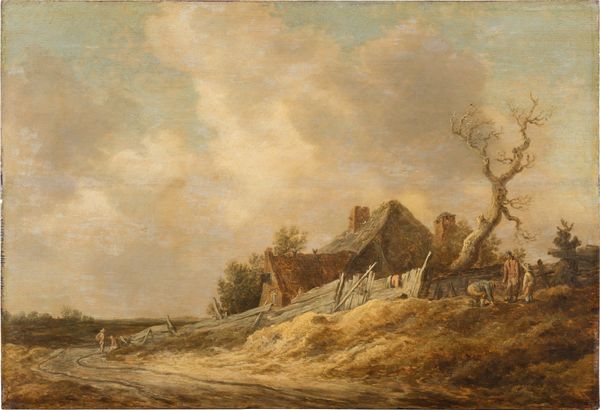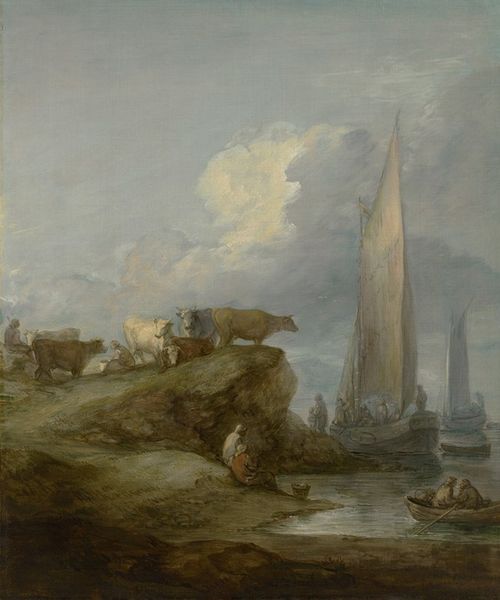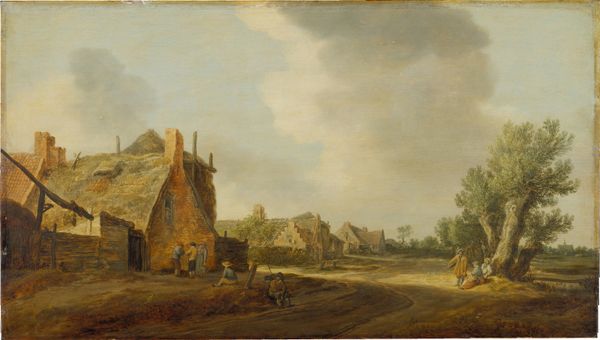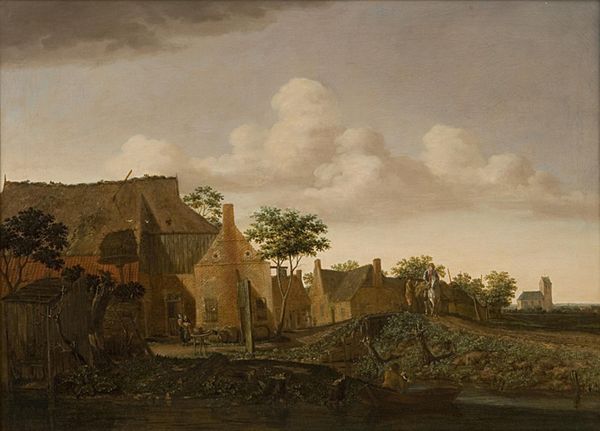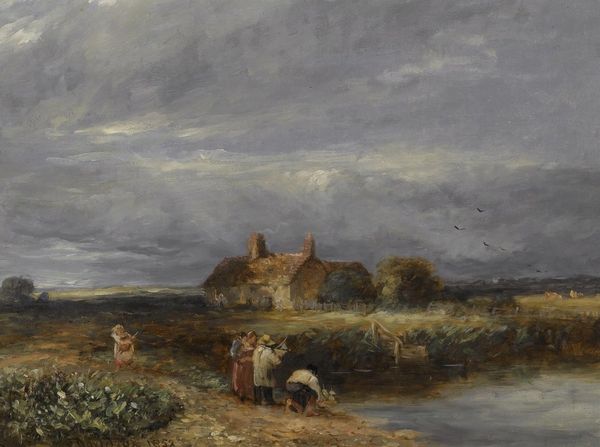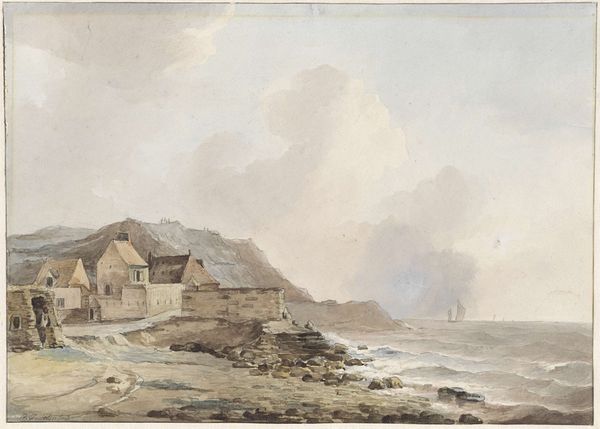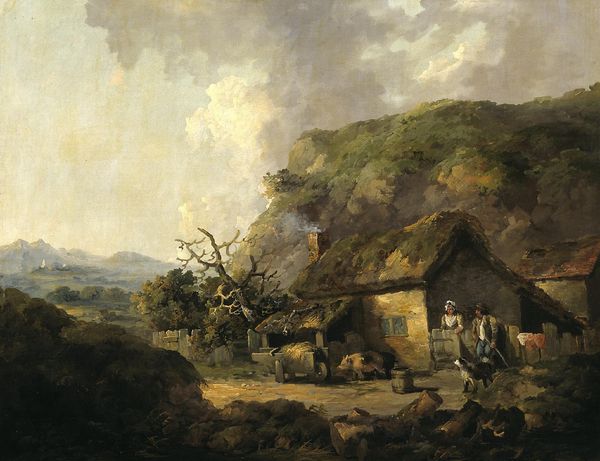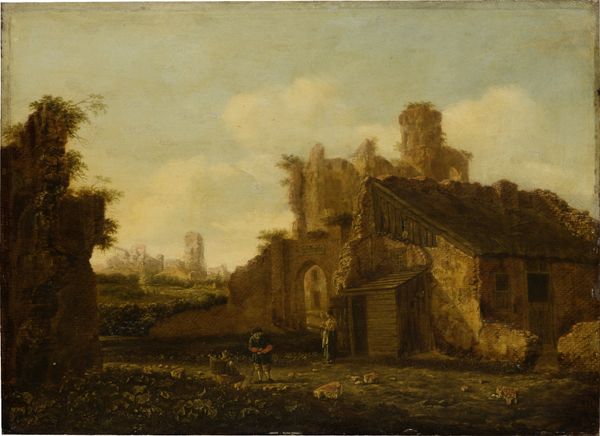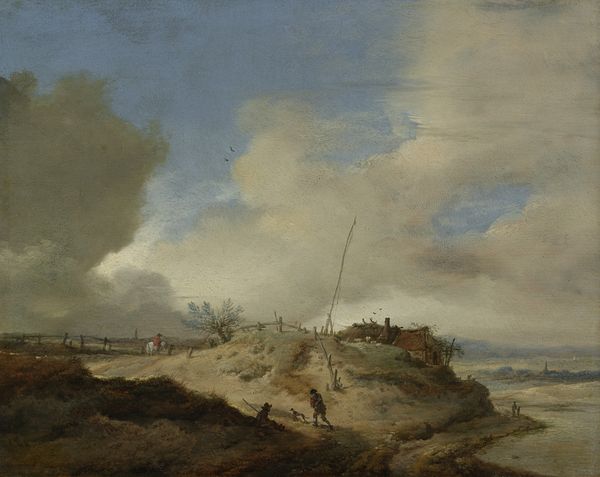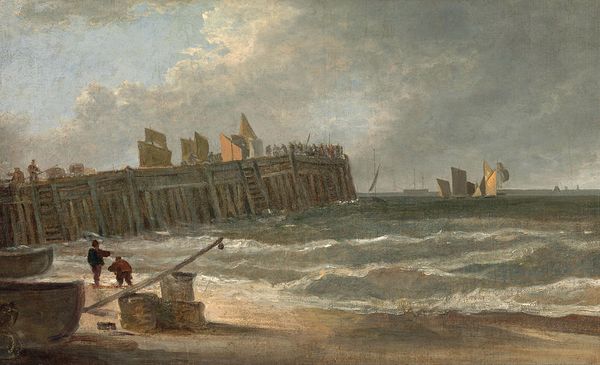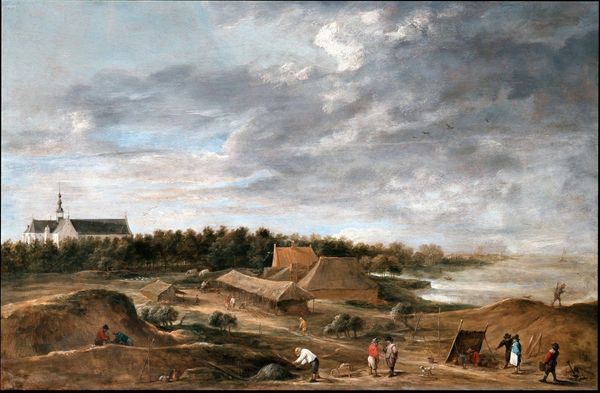
painting, oil-paint
#
venetian-painting
#
baroque
#
painting
#
oil-paint
#
landscape
#
oil painting
#
cityscape
#
realism
Copyright: Public Domain: Artvee
Curator: This oil painting, "A Coastal Architectural Capriccio," is attributed to Francesco Guardi, representative of the Venetian School. What strikes you most about this piece? Editor: It has a kind of melancholy, I think. The muted colours, the rundown buildings, even the sky seems heavy. There's something evocative about this decay. Curator: The decay you mention—I see it reflecting the sociopolitical climate of late 18th-century Venice. Guardi paints a crumbling facade mirroring a fading republic, its power structures eroding. How might the everyday labor, implied by the presence of working figures, relate to this? Editor: I’m interested in the material processes involved in creating this atmospheric perspective using oil on canvas. You see how he layers the paint to simulate the texture of decaying walls, the way the sunlight catches on rough surfaces. It shows a mastery of manipulating his medium, oil, to show labor and its decay. Curator: And what about gender and labor? Beyond just noting laborers, how are their lived realities depicted, their exploitation, and how does this potentially relate to feminist economic thought that begins emerging around the same time period, examining how labor impacts individuals within society’s structures? Editor: You are right to notice the gender and labor within society, but that only heightens the craftsmanship! It shows his mastery to create different images by blending them all. Curator: So, seeing the relationship between labor and the decline of social order and relating those ideas to contemporary notions of work and gender can highlight a certain point of view. It encourages questions around labor and identity. Editor: For me, analyzing the materials and production shows a deep consideration about what kind of labor goes into any creation. Whether it's a grand palace or just a small beachside hut. Both required extensive time and resources. That's not something we often appreciate when we just look at a beautiful building. Curator: Precisely. Looking through lenses of material and production helps to inform ways to bring in different insights around culture. This allows us to see so much more in its layers, Editor: It gives such texture to my understanding. I think both aspects add dimension.
Comments
No comments
Be the first to comment and join the conversation on the ultimate creative platform.
